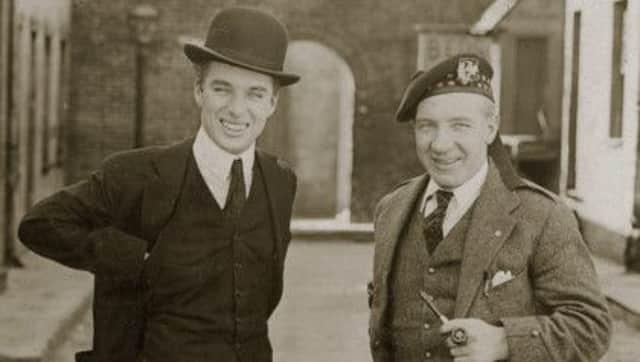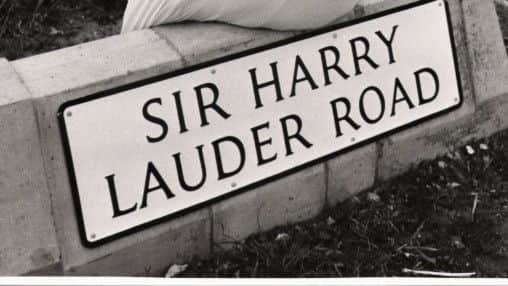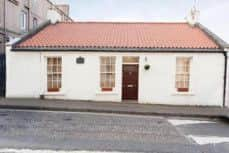Lost Edinburgh: Sir Harry Lauder


Over the course of his long and illustrious career spanning five decades, Sir Harry Lauder entertained music hall audiences all over the English speaking world with his array of heartfelt songs and comedic performances. Consistently dressed in full Highland garb and trademark walking stick, Lauder’s on-stage appearance, dry wit, natural charm and various comic references to Scottish tight-fistedness and general lack of sobriety, all contributed massively to the rest of the world’s view of the stereotypical Scotsman. Remarks such as: “A Scotsman running down the street with his mouth open, because someone had told him there was a nip in the air” were often heavily criticised by Lauder’s fellow countrymen for creating a rather false and unwanted impression of typical Scots temperament, though they met with universal laughter elsewhere.
Beginnings
Harry Lauder was born at Bridge Street, Portobello on 4 August 1870. At the age of twelve, Harry and his siblings moved to Chesterfield where their father had secured work in the ceramics industry. Tragically, the family’s stay in England was cut short following the sudden death of Harry’s father from pneumonia. The Lauder family moved back up north to Arbroath to stay with relatives and young Harry found work in a flax mill.


Advertisement
Hide AdWithin two years Harry was on the move again, this time on his own to Hamilton to try his luck as a collier. Despite the backbreaking graft and gruelling 12 hour shifts down the coal pits which would deprive a man of natural sunlight for six months of the year, Harry would later claim “that’s where I learned to be a comic”.
Big break
Lauder had always harboured aspirations to be a successful singer. He regularly entered competitions in Arbroath and Hamilton and enjoyed singing for his fellow coal miners. Harry eventually received his big break in 1892 when he was offered the chance to tour the country with a concert party. Within just a few years he would be appearing top of the bill in packed theatres up and down the country.
Recording career


Lauder’s arrival on the scene coincided spectacularly with the rise in popularity of the gramophone record. In 1902 he cut his first track for the Gramophone and Typewriter Company. Later on he would go on to record hits such as I Love a Lassie and Roamin’ In The Gloamin’. Many of these tracks have endured in popular consciousness to this very day, with a rendition of his song Keep Right On to the End of The Road belted out regularly by Birmingham City FC supporters as their club’s official anthem. Lauder was also the first British artist to sell one million records and at his height could command fees of up to £12k a night.
International stardom
In 1907 with his popularity in Great Britain at an all-time high, Harry crossed the Atlantic for the first of 22 visits to the United States. A ruthless touring schedule would see him perform twice each day for the next five weeks before sailing back home. His ultra-charismatic on-stage persona and affable Scots brogue went down a treat with international audiences, and he later tasted roaring success in Canada, Australia, New Zealand, South Africa and the Far East.
War efforts and knighthood
Harry Lauder played a hugely significant role during World War One. He is credited with putting his global fame to good use by helping to recruit over 12,000 men for the war effort. Against the advice of the war office, Lauder even ventured into the trenches himself, entertaining Scottish troops on the front line. His one and only son, John Lauder, was sadly killed in action near Poziers in 1916, and in the wake of this personal tragedy, Lauder established the Harry Lauder Million Pound Fund to help the war injured – even making a short film with close friend Charlie Chaplin in order to raise capital. This great charitable effort led to an honorary knighthood in 1919.
Retirement, death and legacy
Sir Harry Lauder officially retired from show business in 1935, although he continued to make sporadic public appearances for many years after. He finally passed away following a stroke in 1950 at the age of 79 – his funeral recorded specially by Pathe News. One of his biggest admirers, Winston Churchill, proclaimed Lauder as “Scotland’s greatest ambassador” and stated that “his inspiring songs and valiant life, rendered measured service to the Scottish race and the British Empire”. In the 1980s when it came to naming the new Portobello bypass, it was a no-brainer. The A199, better known as Sir Harry Lauder Road, ensures that the great man’s legacy lives on. Sir Harry’s childhood home at No.3 Bridge Street still stands today, and features a plaque attached to its façade to mark its significance.
SEE ALSO: